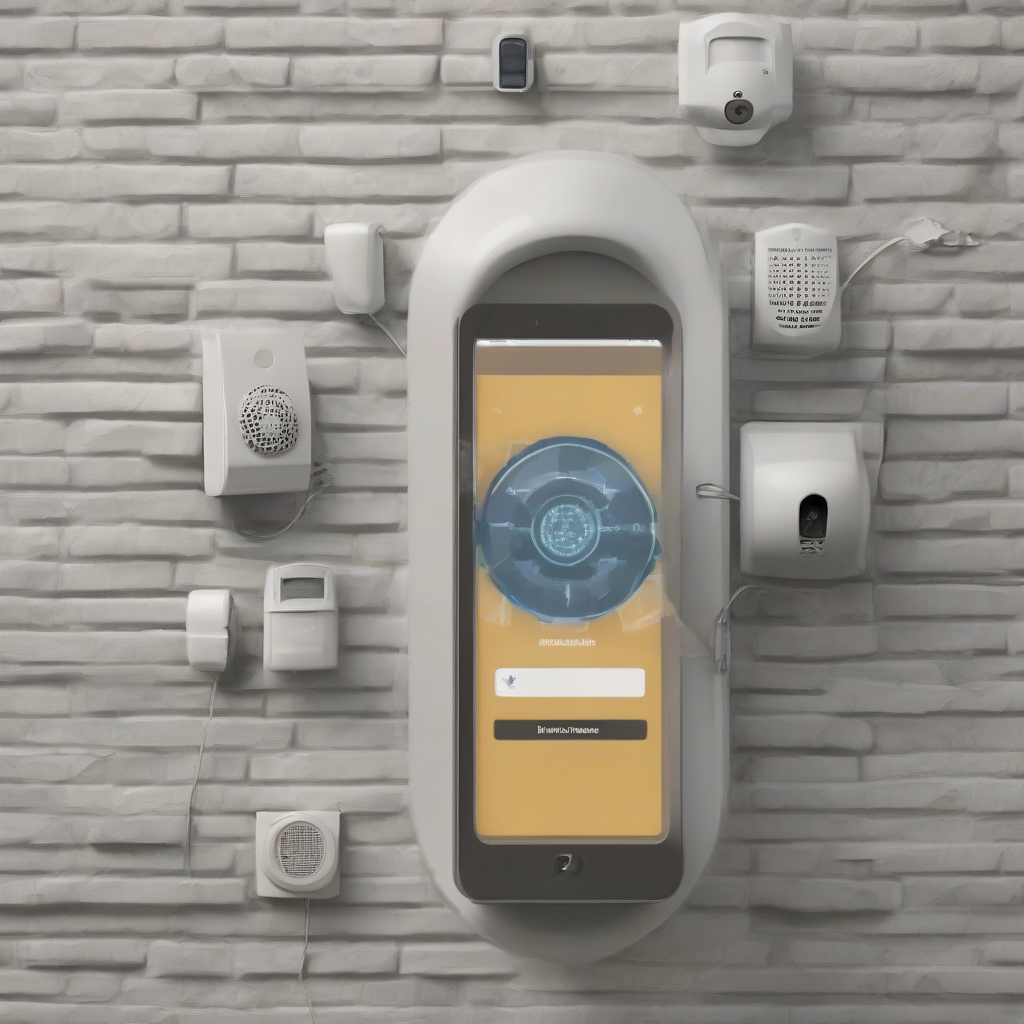Ultimate Guide to At-Home Security Systems: Choosing the Right Protection for Your Peace of Mind
Protecting your home and loved ones is paramount. In today’s world, a comprehensive home security system is no longer a luxury but a necessity. This guide delves into the intricacies of at-home security systems, helping you navigate the choices and select the perfect system tailored to your specific needs and budget.
Types of Home Security Systems
-
DIY Security Systems:
These systems offer flexibility and affordability. They typically involve self-installation and monitoring through a mobile app. Features often include motion sensors, door/window sensors, and cameras. However, professional monitoring is usually an optional add-on.
-
Professionally Monitored Systems:
These systems are installed and monitored by a professional security company. They offer 24/7 monitoring, immediate dispatch of emergency services in case of an alarm, and often include a wider range of features and advanced technologies.
-
Hybrid Systems:
Blending the best of both worlds, hybrid systems allow for DIY installation with the option to upgrade to professional monitoring at any time. This offers a flexible approach, allowing you to start with a basic system and expand as needed.
Key Features to Consider
-
Sensors:
Various sensors are crucial components. Consider:
- Door/Window Sensors: Detect openings and trigger alarms.
- Motion Sensors: Detect movement within your home.
- Glass Break Sensors: Detect the sound of breaking glass.
- Smoke and Carbon Monoxide Detectors: Essential for life safety.
- Flood Sensors: Detect water leaks and potential flooding.
-
Cameras:
Cameras provide visual verification and deter potential intruders. Features to look for include:
- Indoor Cameras: Monitor activity inside your home.
- Outdoor Cameras: Monitor your property perimeter.
- Wireless Cameras: Easy installation and placement.
- High-Definition (HD) Video: Clear image quality for identification.
- Night Vision: Enables monitoring in low-light conditions.
- Two-Way Audio: Allows communication through the camera.
-
Control Panel:
The control panel is the central hub of your system. Consider features like:
- Keypad: For arming and disarming the system.
- Mobile App: Remote access and control from anywhere.
- User-Friendly Interface: Ease of navigation and operation.
-
Monitoring Services:
Professional monitoring provides peace of mind. Consider:
- 24/7 Monitoring: Constant surveillance and immediate response to alarms.
- Emergency Dispatch: Direct contact with emergency services.
- Professional Monitoring Fees: Monthly costs associated with the service.
-
Smart Home Integration:
Many systems integrate with other smart home devices, allowing for automation and enhanced control. Consider compatibility with:
- Smart Assistants (Alexa, Google Assistant): Voice control of your security system.
- Smart Lighting: Automatically turn lights on when an alarm is triggered.
- Smart Locks: Remotely lock and unlock your doors.
Choosing the Right System
Selecting the ideal system depends on several factors:
- Budget: DIY systems are generally more affordable upfront, while professionally monitored systems have ongoing monthly fees.
- Home Size and Layout: Larger homes may require more sensors and cameras.
- Lifestyle: Consider your security needs based on your daily routine and travel habits.
- Technical Skills: DIY systems require some technical aptitude for installation and setup.
- Peace of Mind: Professional monitoring offers greater peace of mind, especially for those away from home frequently.
Installation and Setup
Installation varies based on the system type. DIY systems often come with straightforward instructions, while professionally monitored systems require professional installation.
- DIY Installation: Follow the manufacturer’s instructions carefully. Consider seeking assistance if you lack technical expertise.
- Professional Installation: A professional installer will assess your home’s security needs and install the system efficiently.
- Testing and Calibration: Thoroughly test all components to ensure proper functionality.
Maintenance and Upkeep
Regular maintenance is essential to ensure your system’s effectiveness.
- Battery Replacement: Replace batteries in sensors and other components as needed.
- Software Updates: Regularly update the system’s software to benefit from new features and security patches.
- Testing Sensors: Periodically test all sensors to ensure they are functioning correctly.
- Professional Maintenance (if applicable): Some systems require annual professional maintenance.
Security System Costs
Costs vary significantly depending on the system’s features and type.
- Initial Purchase: Ranges from a few hundred dollars for basic DIY systems to thousands for comprehensive professionally monitored systems.
- Monthly Monitoring Fees: Usually between $30 and $60 per month for professional monitoring services.
- Installation Fees: Can range from free for DIY systems to several hundred dollars for professional installation.
- Additional Equipment Costs: Extra sensors, cameras, or other devices add to the overall cost.
Choosing a Security Company (if applicable)
If opting for a professionally monitored system, thorough research is crucial.
- Reputation and Reviews: Check online reviews and ratings of different companies.
- Contract Terms: Carefully review the contract’s terms and conditions before signing.
- Monitoring Services: Understand the level of monitoring provided and response times.
- Customer Service: Choose a company known for excellent customer service.
Advanced Security Features
- Cellular Backup: Ensures the system remains functional even if internet connectivity is lost.
- GPS Tracking: Some systems integrate GPS tracking for personal safety and asset protection.
- Facial Recognition: Identify individuals approaching your home.
- Artificial Intelligence (AI): AI-powered systems can differentiate between threats and harmless events, reducing false alarms.
Frequently Asked Questions (FAQs)
- Q: Are home security systems worth the investment? A: Absolutely. The peace of mind and protection they offer are invaluable.
- Q: How difficult is it to install a DIY security system? A: Most DIY systems are designed for easy installation, but some technical aptitude may be required.
- Q: What happens if my internet goes down? A: Systems with cellular backup remain operational. Otherwise, the system may be temporarily disabled.
- Q: Can I cancel my monitoring service at any time? A: Generally, you can cancel, but there may be early termination fees.
- Q: Do I need professional monitoring? A: Professional monitoring offers enhanced security and peace of mind, but it’s not strictly necessary for all users.
